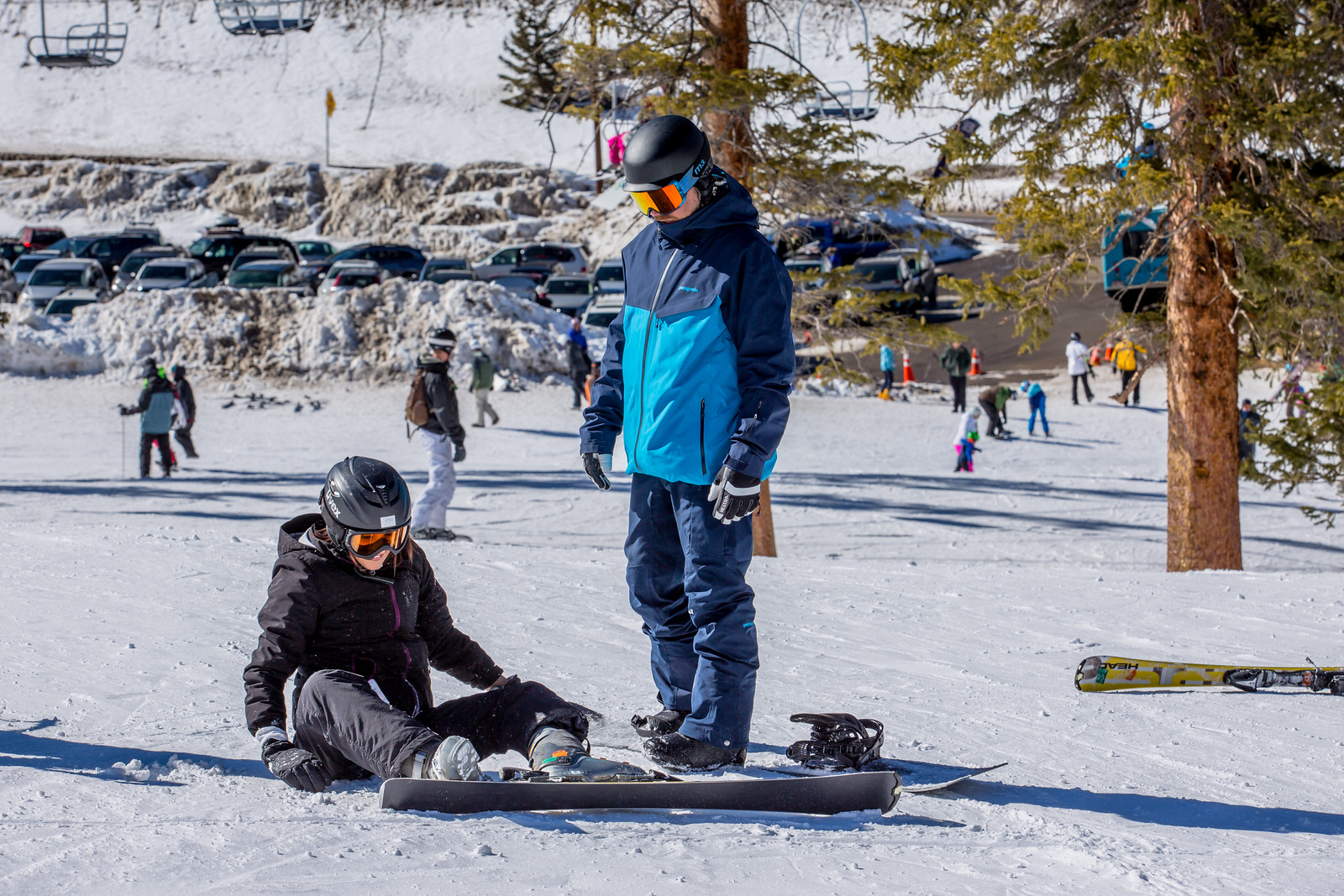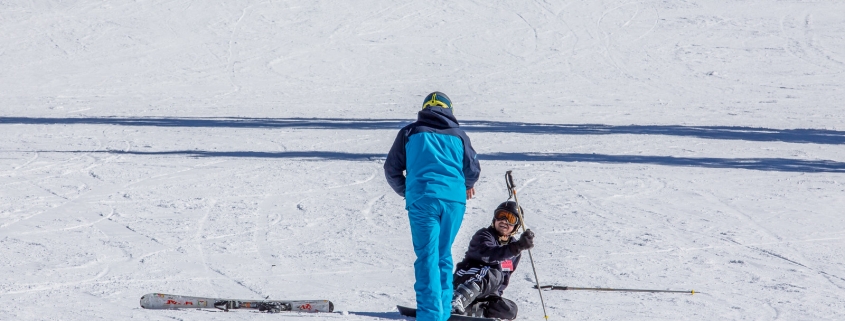Helping Scared Skiers
This article originally appeared in The Professional Skier in the 1990’s written by Jules Older
When you’re an instructor, it’s all too easy to forget what a scary sport skiing is. After all, the mountain is your office, your place of work. Except for your bedroom, it’s where you spend the most time.
But for novice skiers, the mountain is as unfamiliar and frightening as a hospital.
The analogy may seem far-fetched, but consider this: doctors and nurses spend their days in hospitals, hurrying down corridors, waiting impatiently for elevators, sneaking an extra cup of coffee in the cafeteria. To them it’s just the office, and most have no feelings of dread (other than the dread of going to work) as they walk in the front door.
But what does the average ski instructor experience on a trip to the hospital? First, there’s the stomach-churning smell of ether, then the chilling sound of soft moaning. Usually, there’s the frightening sight of patients being wheeled towards unknown destinations and the feeling (if only in imagination) of the hypodermic needle entering your body.
It’s not all that different from the way new skiers feel as they prepare to take their first lesson.

First, there’s the frightening sight of people hurtling doen an impossibly steep mountain; then the teeth-chattering sensation of icy winds howling through your parka. Usually, there’s the deafening blast of snow guns and the feeling (if only in imagination) of the shock of impact from falling off the mountain into a yawning chasm, never to be seen again.
No wonder they’re scared.
An important part of the instructor’s job is to help new skiers through that fear. and the first stage of helping is to be aware of how frightened they may be. Remind yourself that the mountain in winter is as unfamiliar and uncomfortable to them as the hospotal may be to you.
Next, remind yourself that skiing is an inherently frightening sport.
At the coldest time of year, in the coldest part of the country, skiers attach super-slippery plastic slabs to their feet and climb aboard an exposed chair which dangles them high above rocky gorges on their way to the top of a windswept mountain. There they disembark and fly down at terrifying speed.
What’s worse, the very act of skiing goes against all our inbuilt protection systems. In addition to the cold, height and speed factors, skiing also disrupts our most basic relationship – our relationship with gravity.
In the rest of life, when you find yourself going too fast, you lean back. In skiing, leaning back makes you go faster. In the rest of life, when you’re at a sharp drop-off, you lean into the hill, away from the edge. In skiing, leaning into the hill puts you on your ass.
So. You’ve made yourself aware of student fears and some of the fearfulness inherent in skiing. The third stage is to give students permission to talk about the fear they feel. It’s no good to call them wimps, to sneer at what may seem to you a ridiculous fear of the beginner’s slope or a silly apprehension about getting off the chairlift. Accept their fear and let them express it. the key phrase is, “tell me how you’re feeling.”
If you let them, they will.
the fourth stage is to help students get on top of that fear. Have a problem with the chairlift? “I’ll ride up with you this time, and the next time, too, if you want me to. When we get on, I’ll get Tim to slow the chair down, and the guy at the top will slow it down when we get off. And remember – I’ll be right beside you the whole time.”
Does the beginner’s area seem too steep? “Look, I’m going to hold my ski pole on the same angle as the slope in front of you. You tell me when it’s right. Now? Okay, take a look at the pole. As you see, what seems like a terrible steepness when you’re staring down the hill is actually quite gentle when you look at it objectively – when you look at my ski pole.”
Terrified of speed? “How fast would you say we were going on the last stretch? Thirty miles per hour? Well it feels like 30, but in reality we were traveling about four miles per hour. Think about how safe four miles per hour is in fluffy snow like this.”
Finally, reward skiers with praise for their small victories.
“Hey, you got off the chair like you’d been doing it all your life. By this afternoon, you’ll be doing the instructing.”
“Have a look back up the hill. You fell a few times, but you made it to the bottom all by yourself.”
“Man, you were really moving that time! And more important, you stayed in control the whole way.”
Bear in mind that fear is part of skiing. Skiers don’t mind a little terror; in fact, they thrive on it. Conquering that fear is as much part of the thrill of this bizarre sport as learning to carve a parallel turn. The instructor’s job is to help the student enjoy both.





